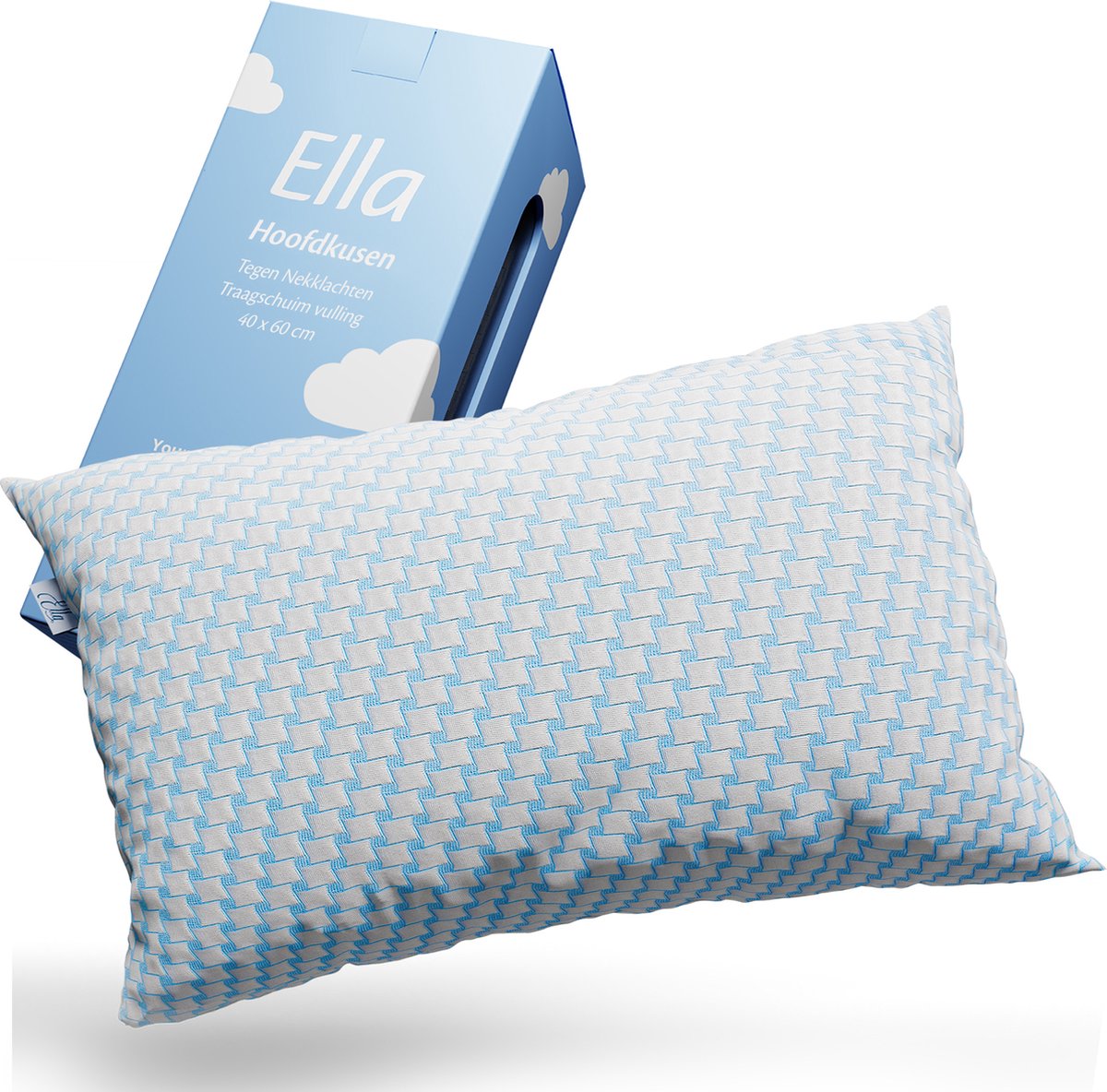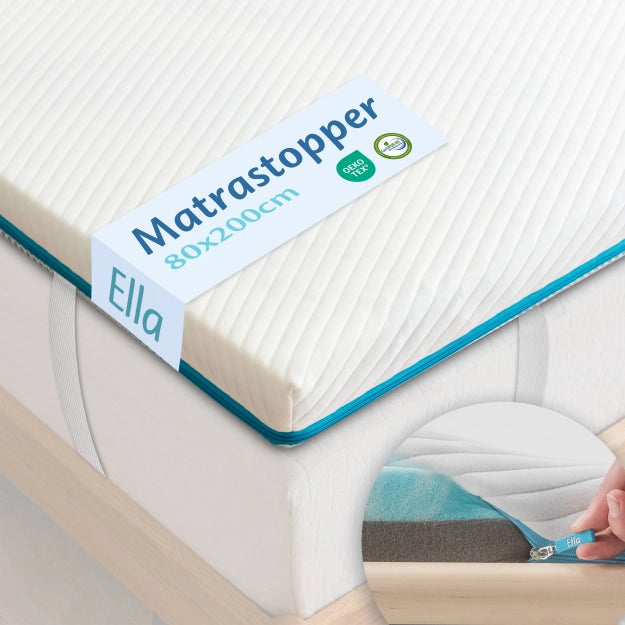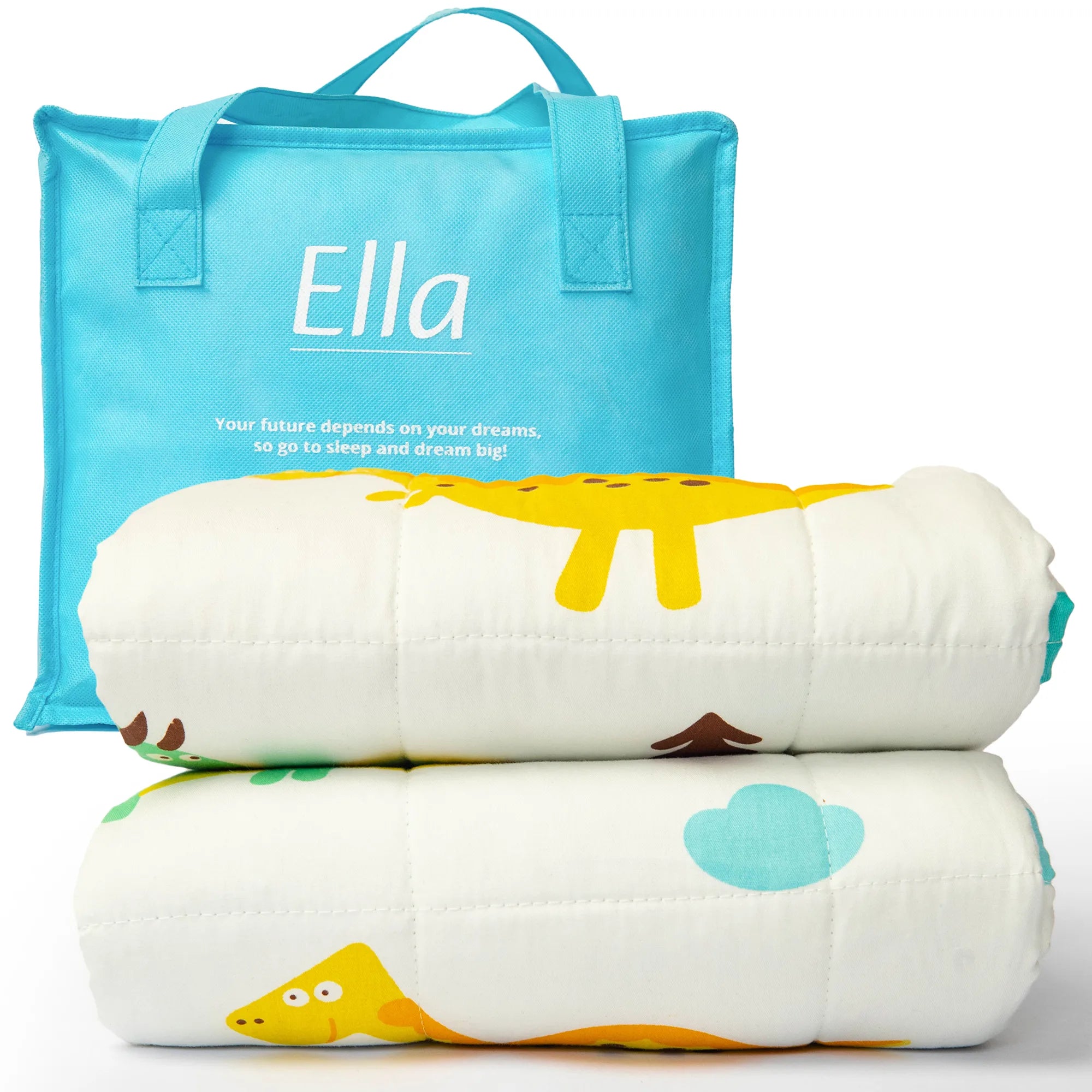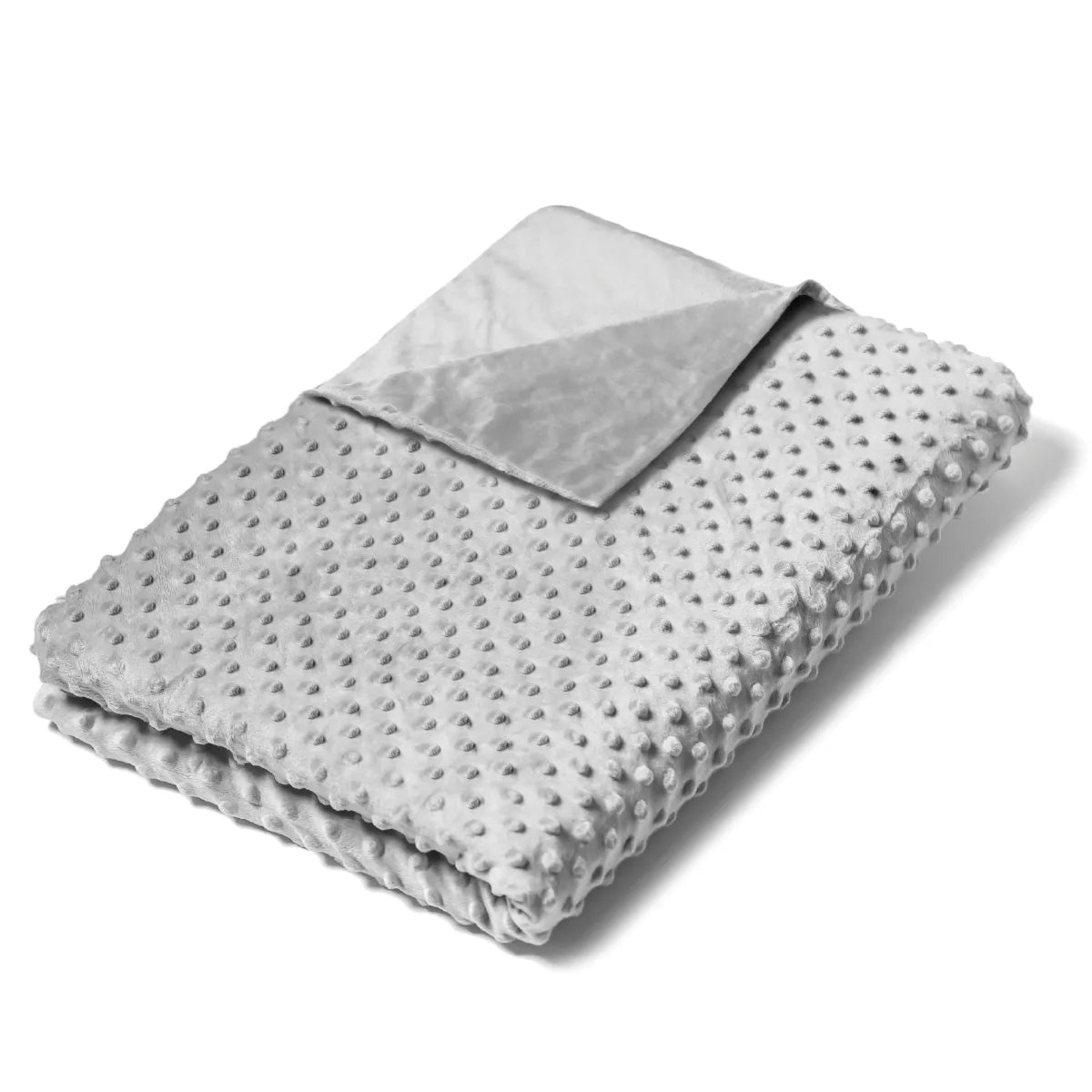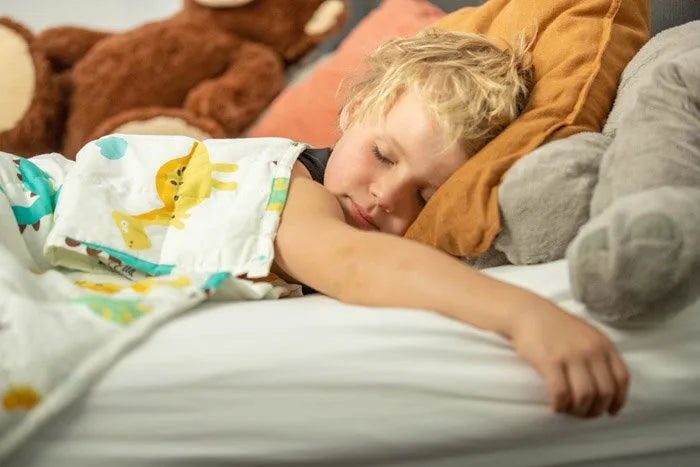
How to Choose the Weight of a Weighted Blanket for Your Child?
Share
Why Choose the Right Weight Weighted Blanket for Your Child?
How heavy weighted blanket child should be is a frequently asked question among parents looking for better sleep aids for their children. Children with sleep problems such as ADHD, anxiety disorders, and sensory processing issues can greatly benefit from using a weighted blanket.
Short and concise answer: A weighted blanket should weigh about 10% of your child's body weight. For example:
- 18-25 kg: 2.2 kg blanket
- 25-36 kg: 3.2 kg blanket
- 36-50 kg: 4.5 kg blanket
- From 37 kg: 6 kg blanket
Sleep is essential for a child's development, but unfortunately not every child gets enough sleep. ADHD, anxiety, and other sleep-disrupting factors can contribute to sleep problems. A weighted blanket can really make a difference here.
A weighted blanket, also called a "weighted blanket", can help your child feel safe and secure. These blankets work through deep pressure stimulation, which has been proven to increase the production of happiness hormones and reduce stress hormones.
Keep reading to discover exactly how weighted blankets work and how to choose the right one for your child.

What is a Weighted Blanket?
A weighted blanket, also called a weighted blanket, is a blanket that contains extra weight. This weight provides a calming effect, similar to a firm hug.
Deep Pressure Stimulation
The main mechanism of action of a weighted blanket is deep pressure stimulation (DPS). DPS is a technique where gentle, even pressure is applied to the body. This can help calm the nervous system and reduce feelings of anxiety and stress.
Research shows that deep pressure stimulation increases the production of serotonin and melatonin, while lowering the stress hormone cortisol. Serotonin and melatonin are important for a good night's sleep and a stable mood.

Calming Effect
The calming effect of a weighted blanket is especially useful for children who have trouble sleeping. Many parents notice that their children breathe more calmly and sleep more deeply under a weighted blanket. This applies to children with and without developmental disorders.
Sensory Processing
For children with sensory processing issues or high sensitivity, a weighted blanket can also be very useful. These children often have difficulty processing stimuli, especially after a busy day. The deep pressure stimulation of the blanket helps them process these stimuli better, making them less tired and more focused.
In short, a weighted blanket provides comfort and helps create a relaxing sleep environment for your child.
How Does a Weighted Blanket Work for a Child?
A weighted blanket works by applying subtle pressure to your child's body. This constant, gentle pressure is also called Deep Pressure Stimulation. It feels like a firm hug and makes your child feel secure and safe.
The Role of Serotonin, Melatonin, and Cortisol
Deep Pressure Stimulation helps the production of serotonin and melatonin. Serotonin is the happiness hormone that helps your child feel calm and content. Melatonin is the sleep hormone that helps your child fall asleep more easily and sleep more deeply.
On the other hand, the pressure of the weighted blanket helps lower the level of cortisol, the stress hormone. This causes your child to experience less stress and relax better.

Effect on the Nervous System
The subtle pressure of the weighted blanket is received by the nervous system. This has a calming effect on your child's body and mind. As a result, the nervous system can process stimuli better, which is especially useful for children with ADHD, sensory processing issues, or autism.
Who Can Benefit from a Weighted Blanket?
Weighted blankets can help many children. They are especially useful for children with specific needs such as sleep problems, traumas, ADHD, sensory processing issues, high sensitivity, and autism.
Sleep problems
Many parents notice that their children sleep better under a weighted blanket. The subtle pressure helps children sleep more deeply and breathe more calmly. Research shows that weighted blankets have a positive effect on the sleep patterns of both young children with and without developmental disorders.
Traumas
Children who have experienced trauma can benefit from a weighted blanket. The deep pressure of the blanket can provide a sense of safety and security, which helps reduce anxiety and improve sleep.
ADHD
Children with ADHD can feel restless and overstimulated. Occupational therapists often recommend weighted blankets for children with ADHD. The extra pressure provides proprioceptive input, which calms the nervous system. Kay Martner, mother of a child with ADHD, says: "One of the most effective techniques to help her regain control during an aggressive outburst is to place her under a weighted blanket."

Sensory Processing Issues and High Sensitivity
Children with sensory processing issues have difficulty processing stimuli, especially after a busy day. The deep pressure stimulation of a weighted blanket helps process these stimuli better, making them less tired and more focused. Marieke, a mother of a highly sensitive child, says: “After the first night sleeping under his Calmzy, my son said: ‘WOW mom, this blanket really sleeps incredibly well, you know!’”
Autism
Many children with autism have sensory processing disorders and sleep problems. Weighted blankets help produce serotonin, a chemical that provides calm and a stable mood. This is essential because children with autism often produce less serotonin and melatonin. The mother of five-year-old Kai says: “My son uses his weighted blanket to sleep, but also to calm down after tantrums.”
Conclusion
In short, children with various issues can benefit from a weighted blanket. Whether it concerns sleep problems, trauma, ADHD, sensory processing issues, high sensitivity, or autism, a weighted blanket can help bring peace and calm.
Keep reading to discover how to choose the right weight for a weighted blanket and how to use it safely.
How Do You Use a Weighted Blanket for a Child?
A weighted blanket can be a great way to help your child relax and sleep better. But how do you use such a blanket properly?
Directly Under the Blanket
It is best that your child lies directly under the weighted blanket. This ensures that the Deep Pressure Stimulation works optimally. This pressure helps the body produce serotonin and melatonin, which has a calming effect and promotes sleep.
Daytime Use
A weighted blanket is not just for nighttime. It can also be useful during the day. For example:
- During a nap: Let your child take a nap under the blanket.
- On the couch: Use the blanket when your child is sitting on the couch watching TV or reading a book.
- During homework: Wrap the blanket around your child while doing homework to promote concentration.
According to Canadian occupational therapist Dina Barnes, it is good to use the blanket during the day as a preventive measure, and not only when your child is upset. For example, use the blanket for 20 to 30 minutes and then put it away for at least 30 minutes for the best result.
Calming Effect
A weighted blanket can help calm your child, especially after a busy day full of stimuli. The Deep Pressure Stimulation of the blanket can reduce overstimulation and provide a sense of safety and security. This effect is similar to a warm hug.
Remove Independently
It is crucial that your child can remove the blanket by themselves. This is important for safety, especially with young children. Make sure the blanket is not too heavy and that your child understands how to remove the blanket if needed.
When your child is introduced to a weighted blanket for the first time, slowly pull the blanket up from the feet and ask how he or she feels about it. If the feeling is good, then move the blanket up to the chest.
Keep reading to discover how to choose the right weight for a weighted blanket and how to use it safely.
How Heavy Weighted Blanket Child?
Choosing the right weight for a weighted blanket is essential for your child's safety and comfort. A good rule of thumb is that the blanket should be about 10% of your child's body weight, with a margin of 0.5 to 1 kg extra for added comfort.
Weight Class for Children
Here is a handy table to help you choose the right weight:
| Body Weight | Recommended Blanket Weight |
|---|---|
| 15-25 kg | 2.4 kg |
| 25-40 kg | 3.2 kg |
| 40-60 kg | 4.2 kg |
It is important to remember that every child is different. Pay close attention to how your child reacts to the blanket and adjust the weight if necessary.

Safety and Age
Safety is the most important factor when using a weighted blanket for children. Here are some guidelines:
- Age: Weighted blankets are suitable for children from 2 years old. Younger children may not be able to remove the blanket themselves, which can be dangerous.
- Remove independently: Make sure your child is strong enough to remove the blanket independently. This prevents suffocating situations.
- Consult a professional: Before purchasing a weighted blanket, it is wise to consult a pediatrician or therapist. They can advise you on the correct weight and safe use.
The right weight and proper use of a weighted blanket can make a world of difference for your child's comfort and safety.
Keep reading for answers to frequently asked questions about weighted blankets for children.
Frequently Asked Questions about Weighted Blankets for Children
What if you have a weighted blanket that is too heavy?
A weighted blanket that is too heavy can cause a feeling of suffocation and even be dangerous for your child. Make sure the blanket does not weigh more than 10% of your child's body weight. In some cases, up to 25% of body weight may be acceptable, but this should always be done in consultation with a professional.
Example:
- Body weight 20 kg: Choose a 2 kg blanket.
- Body weight 30 kg: Choose a 3 kg blanket.
How old should my child be to use a weighted blanket?
A weighted blanket is safe for children from 2 years old. Children younger than 2 years are often not strong enough to remove the blanket, which can lead to dangerous situations.
Important points:
- Independent use: Your child must be able to remove the blanket independently.
- Consult a professional: Before purchasing a weighted blanket, always consult a pediatrician or therapist for tailored advice.
How do you wash a weighted blanket?
It is important to maintain a weighted blanket properly for optimal hygiene, especially with children. Here are some tips:
- Use a protective cover: This makes cleaning easier. The cover can be easily machine washed.
- Washing machine: Most weighted blankets can be machine washed, but always check the care label for specific instructions.
- Hygiene: Wash the cover regularly and the blanket itself if necessary.
Pro Tip: Consider an extra cover to switch during washing.
Keep reading for more information on choosing the right weighted blanket for your child.
Conclusion
At Ella Sleeps, we understand how important a good night's sleep is for your child. Sleep problems can hinder a child's development, and a weighted blanket can help with that. By choosing the right weight, you ensure your child feels secure and sleeps better.
Our weighted blankets provide a calming effect through deep pressure stimulation, which helps increase sleep hormones (serotonin and melatonin) and decrease the stress hormone (cortisol). This results in better sleep and a happier child.
Right Weight
Choosing the right weight is crucial. A general guideline is to choose a blanket that weighs about 10% of your child's body weight, with a margin of 0.5-1 kg extra. This ensures the right pressure without being too heavy.
- 15-25 kg: 2.4 kg blanket
- 25-40 kg: 3.2 kg blanket
- 40-60 kg: 4.5 kg blanket
Safety and Age
Safety comes first. Make sure your child can remove the blanket themselves. Weighted blankets are generally recommended for children from 2 years old. Always consult a professional if you have doubts.
Better Sleep
With a weighted blanket from Ella Sleeps, you give your child a chance for better sleep. The blanket not only helps with sleep problems but also with conditions such as ADHD, high sensitivity, and autism.
Want to know more or purchase a weighted blanket directly? Check out our range and give your child a well-deserved night's rest.
Discover our weighted blankets here
Frequently Asked Questions (FAQ)
How heavy should a weighted blanket for a child be?
A weighted blanket for a child should weigh about 10% of the body weight, with a margin of 0.5 to 1 kg for extra comfort. For example: for a child weighing 25 kg, a blanket of about 2.5 to 3.2 kg is ideal.
From what age can a child use a weighted blanket?
A weighted blanket is suitable for children from 2 years old, provided they can independently remove the blanket. Use is discouraged for younger children due to safety risks.
What are the benefits of a weighted blanket for children?
Weighted blankets promote calm and security, stimulate the production of melatonin and serotonin, and reduce the stress hormone cortisol. They are particularly effective for children with sleep problems, ADHD, sensory processing disorders, or autism.
How do you safely use a weighted blanket with a child?
Have your child lie directly under the blanket and ensure the weight is well distributed. The blanket should not cover the head and the child must always be able to remove the blanket themselves. Preferably use the blanket for 20–30 minutes at a time, also during the day.
Can a weighted blanket that is too heavy be harmful?
Yes, a weighted blanket that is too heavy can cause a feeling of suffocation and be uncomfortable or even dangerous, especially for young children. When in doubt, always consult a doctor or therapist for personalized advice.
